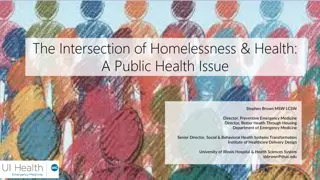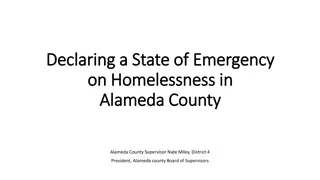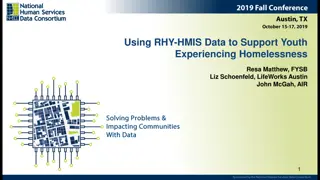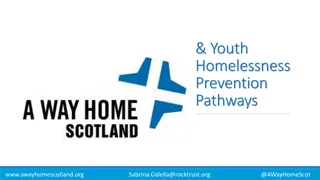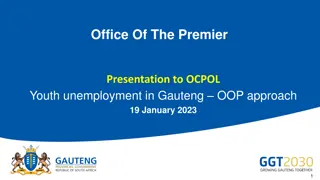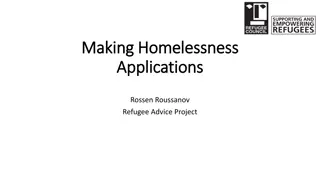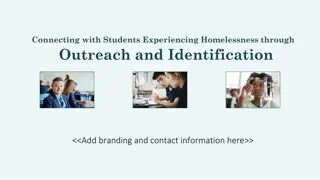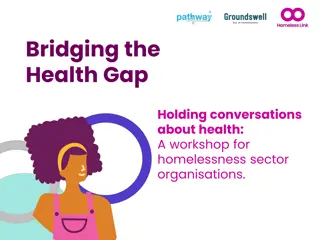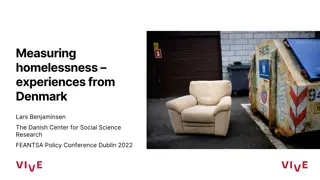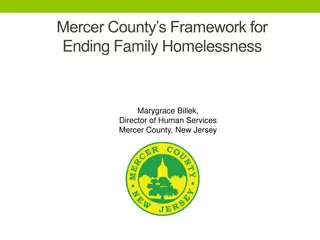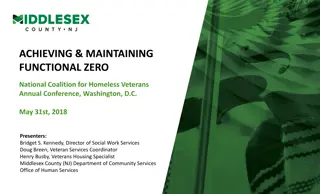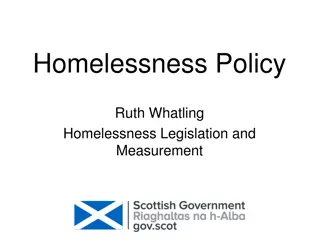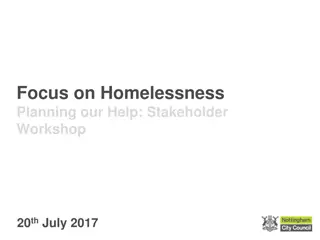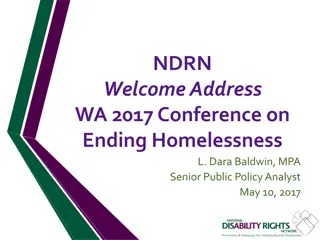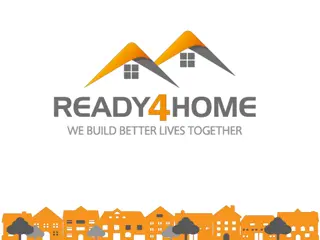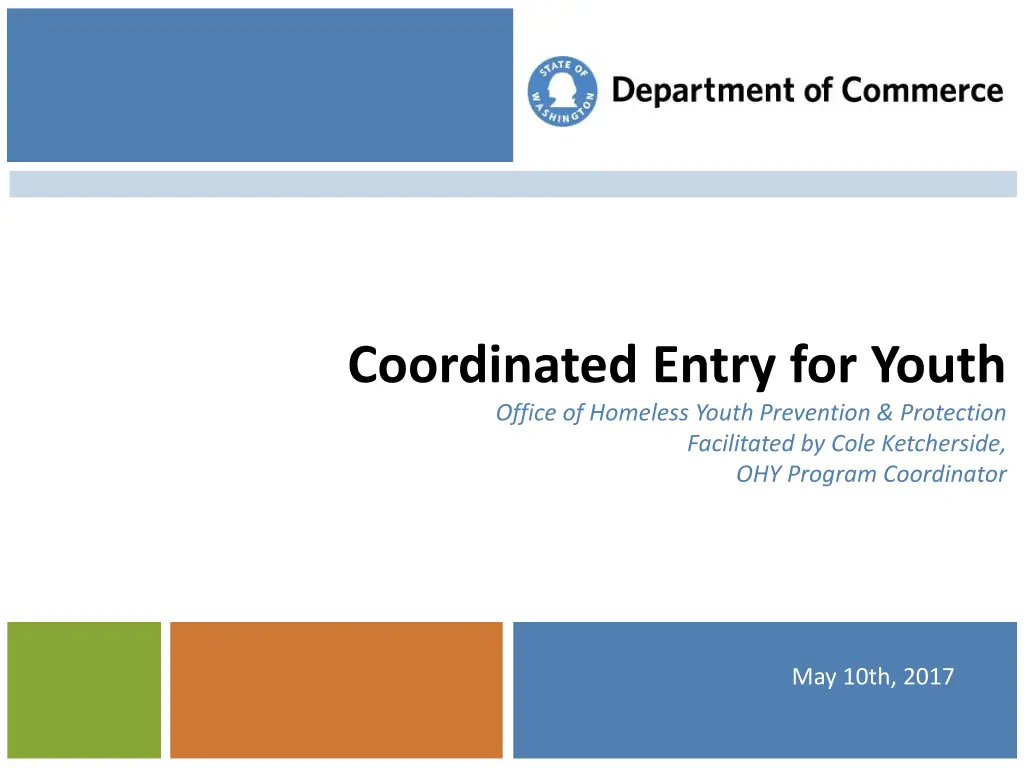
Youth Homelessness Prevention & Coordination Initiatives
Explore the impactful work of the Office of Homeless Youth in Washington State, focusing on coordinated entry efforts, services for youth, strategic priorities, and population served to ensure safe and stable housing for all. Learn about the guiding vision, key programs, and panel discussions aimed at addressing youth and young adult homelessness effectively.
Download Presentation

Please find below an Image/Link to download the presentation.
The content on the website is provided AS IS for your information and personal use only. It may not be sold, licensed, or shared on other websites without obtaining consent from the author. If you encounter any issues during the download, it is possible that the publisher has removed the file from their server.
You are allowed to download the files provided on this website for personal or commercial use, subject to the condition that they are used lawfully. All files are the property of their respective owners.
The content on the website is provided AS IS for your information and personal use only. It may not be sold, licensed, or shared on other websites without obtaining consent from the author.
E N D
Presentation Transcript
Coordinated Entry for Youth Office of Homeless Youth Prevention & Protection Facilitated by Cole Ketcherside, OHY Program Coordinator May 10th, 2017
Coordinated Entry Panelists Derek Harris Deputy Director, Community Youth Services Melinda Giovengo Executive Director, YouthCare Jenna Gearhart Program Director, Labateyah Youth Home
OHY Guiding Vision Every family and youth in Washington State has the individualized support they need so that no young person has to spend a single night without a safe and stable home. Every community has services that are equitable, accessible, effective, responsive, and coordinated.
Overview- Office of Homeless Youth Established via 2015 Homeless Youth Act (2SSB 5404) OHY manages and provides funding for six statewide programs that serve runaway and homeless youth Transferred programs from DSHS to Commerce (HOPE, (S)CRC, SYS) 2016 supplemental budget added new programs; Young Adult Shelter (YAS) & Young Adult Housing (YAHP) Strategic plan to Governor and Legislature on Dec 1, 2016.
OHY Five Priority Areas 1. Stable Housing 2. Family Reconciliation 3. Permanent Connections 4. Education & Employment 5. Social & Emotional Well-Being
Population Served Minors (ages 12 to 17) Family conflict Health and safety risk Without safe and stable housing Unaccompanied Runaways Young Adults (ages 18 to 24) Without safe and stable housing
Goals of Panel OHY and its role in addressing youth and young adult homelessness Know State and federal guidance regarding Coordinated Entry (CE) Youth and young adults are developmentally different requiring a different kind of response to their homelessness Understand Youth and young adult housing providers are experts at serving homeless youth and young adults Need for youth specific definitions of homelessness, access points, screening and assessment tools, and prioritization Learn Importance of including YYA providers in CE design & implementation Creative ideas for making CE work more effectively for homeless youth and young adults
Coordinated Entry Process Standardized Assessment People know who to call and where to go Connections to program openings Assessed and prioritized Intake Referral
Coordinated Entry Models Centralized De-Centralized Singly point of entry for all populations Physical or phone based Multiple points of entry by population and/or geography Physical or phone based Same screening and assessment tools across all points of entry
Coordinated Entry Flow Chart Prevention/ Diversion Transitional Housing Outreach Rapid Re- Housing Housing Assistance Coordinated Entry Permanent Housing Community Emergency Shelter
Federal and State Guidance Federal State CHG programs must participate in CE Prioritize unsheltered households (35%) and those with greatest need Assessment tools that match households with appropriate services Maintain housing inventory Must have CE policies and procedures in place ESG and CoC communities must have CE system Prioritize households based on need & vulnerability May have different access points for subpopulations Must have standardized assessment tools May have different assessment tools for different subpopulations May use more than assessment score to determine prioritization
Key Issues Benefits, Challenges, Solutions Points of Entry Direct individuals to a single point of entry where they can be screened, assessed, and referred to housing resources. Question for Panelists How has the CE process impacted where youth and young adults go for housing services in your community?
Key Issues Benefits, Challenges, Solutions Definitions of Homelessness Impacts who is considered eligible to be screened in for housing services Question for Panelists How has existing definitions of homelessness had an impact on the referrals you receive from CE? How has this resulted in more or fewer placements into housing for youth and young adults?
Key Issues - Benefits, Challenges, Solutions Prioritization Determines which order individuals are served based on need and vulnerability Question for Panelists What does vulnerability look like for youth and young adults experiencing housing instability? What distinction, if any, is there between need and vulnerability? What must be in place to effectively assess young people for need and vulnerability?
Key Issues - Benefits, Challenges, Solutions Coordination with YYA providers CE s solicit feedback annually from participating projects in order to improve CE design and implementation. Question for Panelists What has been your experience engaging with the CE system? What can a CE system do to better engage RHY providers? What does an effective CE system for youth look like?
OHY- Draft Recommendations 1. Establish Youth Specific Access Points, Screening, and Assessment Tools 2. Develop Youth Specific Prioritization Criteria 3. Allow Flexibility at the Local Level 4. Coordinate with RHY Providers
Facilitated by: Cole Ketcherside Program Coordinator, OHY (360) 725-5056 cole.ketcherside@commerce.wa.gov www.commerce.wa.gov


